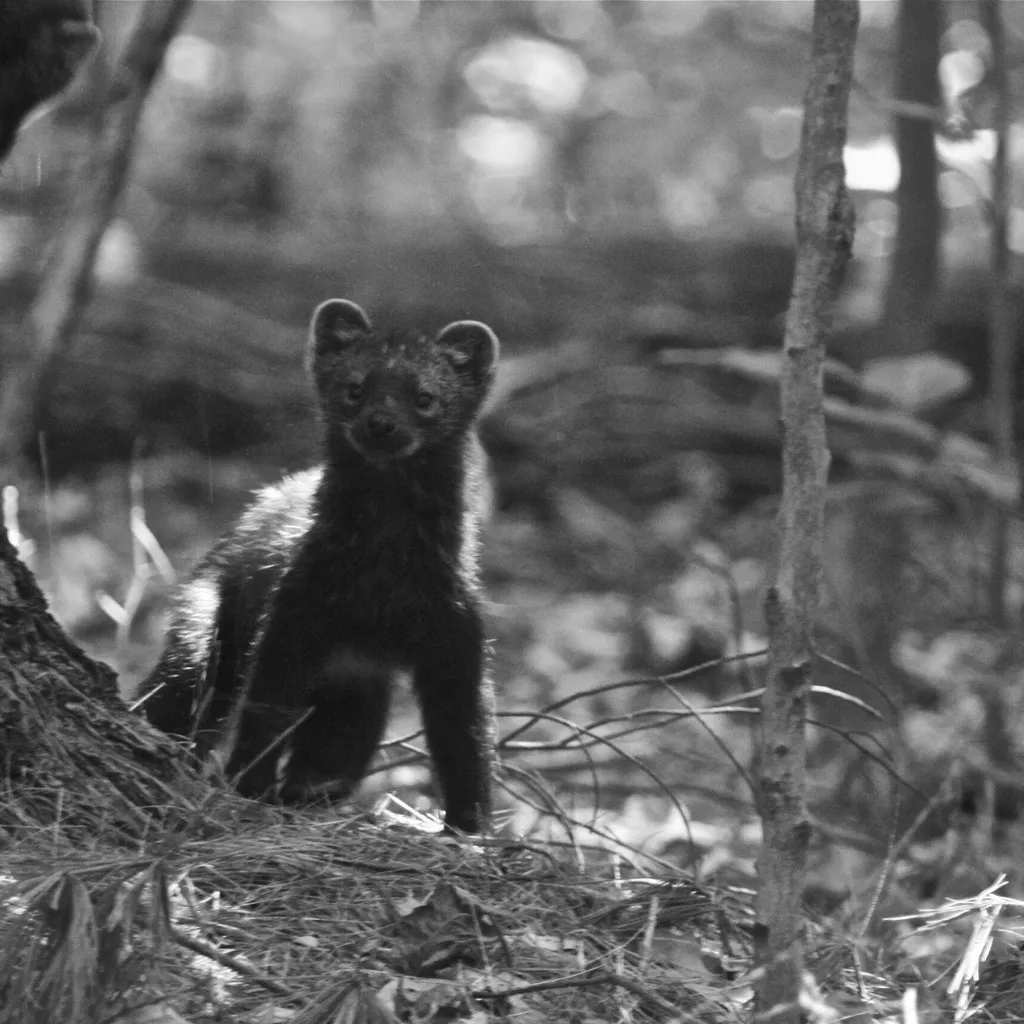Those living on European soil would be forgiven for never having heard of a fisher. But it might be more familiar to our friends across the pond in North America says Pamela Flick, from Defenders of Wildlife
What is a fisher?
Looking something like a miniature wolverine, fishers are carnivorous mammals of the Mustelidae or weasel family – along with marten, wolverine and mink – and are found only in North America.
Why are they also called fisher cats?
The term fisher cat is believed to stem from European settlers in North America who misidentified the fisher for a polecat (which was later domesticated and is now known as the common ferret). The word for the pelt of a polecat is ‘fiche’, which is where the name ‘fisher’ is believed to have derived. So that may be how we arrived at ‘fisher cat’.
What do fishers look like?

Fishers are long, slender animals with brown or black fur, often with irregular white patches on the chest and underside. They have short legs, broad heads, bushy tails and small, rounded ears.
How big are fishers?
Fishers are typically the size of a large house cat, with males weighing 3-6kg and measuring up to 120cm in length. Females usually weigh up to about 3kg and measure up to roughly 95cm.
Where do fishers live?
Fishers are found in mixed coniferous forests with heavy tree-canopy cover in Canada and the USA. In Canada, they range from Nova Scotia to British Columbia and up to Alaska. In the USA, populations are found all around New England and as far south as Tennessee, as well as in the northern Great Lake states and in the northern Rocky Mountains. There are several small West Coast populations in south-western Oregon and the Sierra Nevada in California. Fishers have also been reintroduced on the Olympic Peninsula and North Cascades in Washington State.
How many are there in the wild?

It’s thought that more than 100,000 fishers remain in North America. Fishers are common in the north-east and Midwestern states of the USA, but rare in the north-west and Rocky Mountains, as well as California’s Sierra Nevada, where there are believed to be fewer than 300 adult fishers. Loss of forest habitat due to unsustainable logging, severe wildfires, poisoning by rodenticide (rat poison) used in illegal marijuana growing operations, disease and vehicle strikes all contribute to the decline of this rare and charismatic species.
Do they have any predators?
Adult male fishers are most commonly killed by mountain lions, while adult females are often killed by bobcats, as well as mountain lions and coyotes. Fisher kits may be vulnerable to hawks, foxes or big cats, as well as adult male fishers. By far, humans and human activities are fishers’ most significant threat. In the late 19th and early 20th centuries, fishers were virtually eliminated from the southern and eastern parts of their range due to over-trapping and loss of forest habitat.
What do fishers eat?
Despite their name, fishers do not hunt or eat fish. Fishers are omnivorous and have a varied diet consisting mostly of small to mid-sized mammals, including squirrels, wood rats, rabbits and snowshoe hares. Though they are effective hunters, fishers will eat lizards, birds, insects, nuts and berries when larger prey is not available.
Are they social animals?
They are usually solitary animals, but they do live in small family units when the females raise their young, called kits.
How do they reproduce?
Interestingly, the fisher’s reproductive cycle lasts nearly a year. Fishers usually mate late February to late April, but delayed implantation after successful mating leads to litter production approximately 10 months later. Litters are between one and four kits, which are dependent on their mother until the autumn and usually disperse to find their own territories at 10-12 months of age. Male fishers do not aid in the rearing of young. In fact, the males may kill young in order to trigger breeding opportunities with the females.
Do they pose a risk to humans?
Fishers pose an extremely low threat to humans but have been known to attack small domestic animals. They can be scared away with noise or bright lights.
What do fisher tracks look like?
A fisher’s foot has five toes and the front pads are C-shaped. They can be recognised by the overlapping tracks of the front and back paws.
What do fishers sound like?
Fishers typically do not vocalise but are known to growl or hiss, and occasionally make chuckling noises when distressed.
Are fishers good climbers?
Definitely – fishers are agile, swift and excellent climbers, with sharp, retractable claws. They are also able to turn their back feet nearly 180º, making them one of relatively few mammals able to climb head-first down trees.
Pamela Flick, from Defenders of Wildlife manages Defenders’ California Program and engages on a variety of issues statewide, including gray wolf recovery, responsible renewable energy planning and development, forest resilience and fire restoration, and advancing conservation of imperiled species and natural communities.
Top image: Fisher climbing a tree © Douglas H. Domedion, CC BY-SA 4.0 https://creativecommons.org/licenses/by-sa/4.0, via Wikimedia Commons